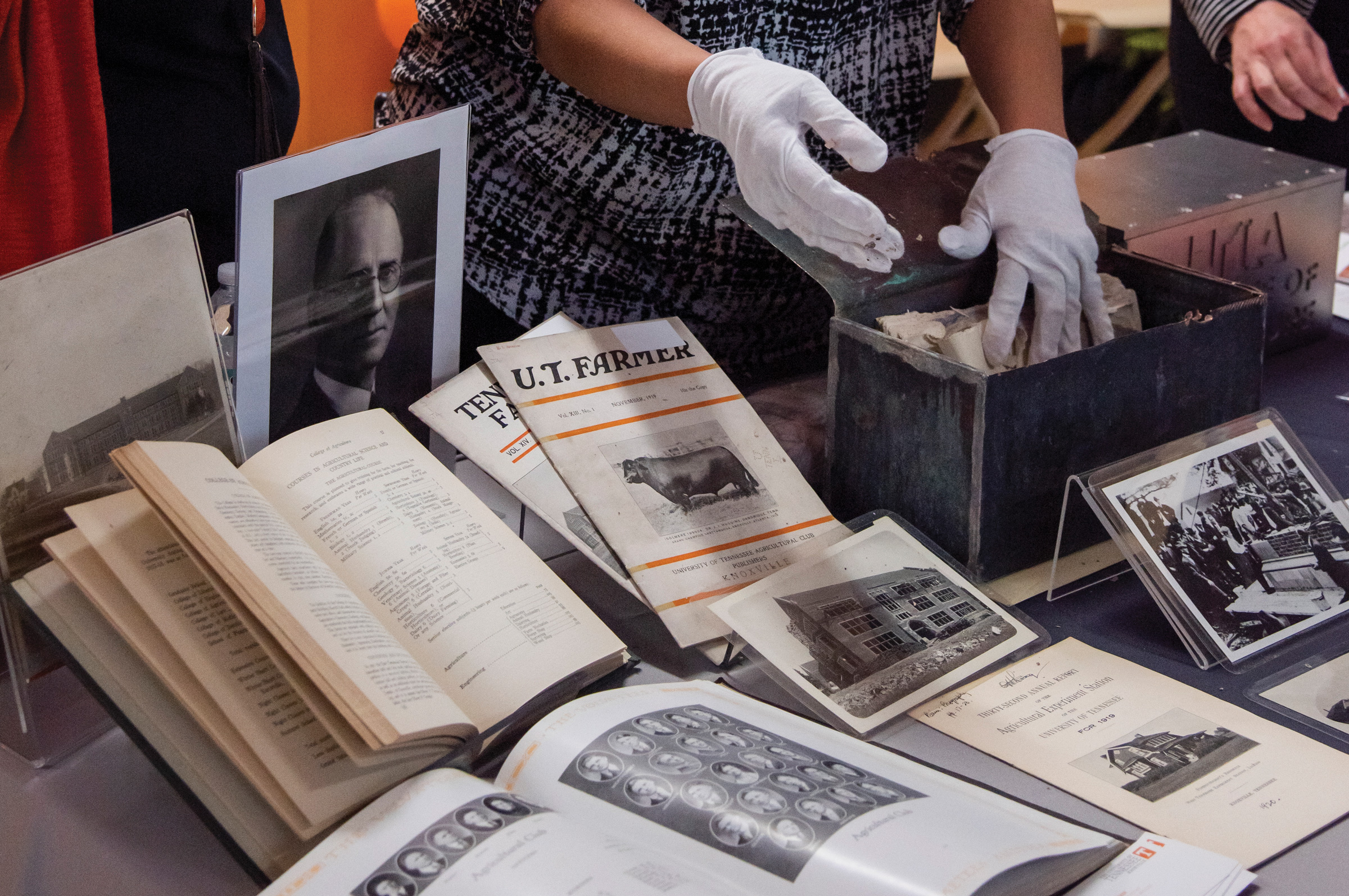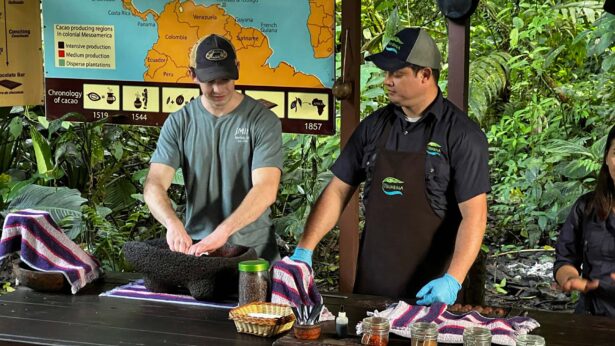By Margeaux Emery
Is it fair to call a time capsule romantic? The desire to see inside these vessels of history can be irresistible. UT System President Randy Boyd admitted as much in June when he told an audience gathered in UT Institute of Agriculture’s Morgan Hall he was cutting his speech short because he was eager to see what lay inside the building’s 102-year-old capsule.
The lure of a time capsule drew an estimated 120 employees and friends that day, while another 1,700-plus watched a Facebook Live stream. They were there for the centennial celebration held in honor of Morgan Hall, which marked its first century of service on June 6. The stately brick-and-stone building in Knoxville has served as headquarters of UT’s statewide programs in agriculture since 1921.
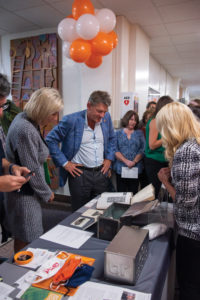
Following speeches by dignitaries, two employees lifted a shimmering orange veil to reveal a dull and somewhat dusty copper box. Photographs and documents inside had crumbled over time, felled by moisture that found its way in through a hairline crack in the box’s thick lead solder. University Archivist Alesha Shumar and staff from UT Libraries Special Collections showed duplicates of the campus memorabilia the capsule had contained.
Special Collections staff were there, too, at a ceremony held for Estabrook Hall in 2018, ready to display duplicates beside the cremains of a 112-year-old time capsule.
Shumar takes setbacks in stride.
“The Library of Congress estimates that some 70 to 80 percent of time capsules fail within the first 40 years,”she says.
And still the fascination continues.
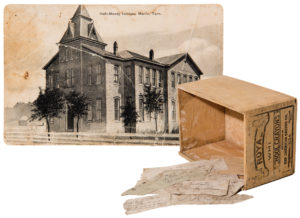
Something about distilling the present day and sending its essence forward to unknown recipients in an unknowable year is compelling. And so is the desire to tell about doing it. Morgan Hall’s 1919 capsule contents were listed in publications of its day and reported in histories of UT agriculture programs. Estabrook’s contents were similarly documented.
No list of contents can be found of a time capsule installed in 1939 at the UT Health Science Center in Memphis. Neither were the items preserved when the capsule was opened in 1974. Today, all the campus knows is that former Chancellor Bill Rice said it was unfortunate such goofy things were placed in it.
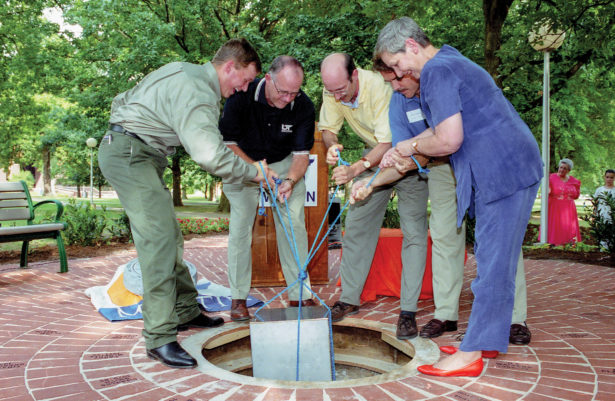
At UT Martin, a time capsule was retrieved from the building that housed the university’s forerunner, the Hall-Moody Institute. Inside was a Bible, a Martin Mail newspaper from Sept. 28, 1900, and a wooden crayon box. Inside the box were dozens of paper scraps signed by people who were present when the capsule was sealed. Faculty and staff placed a capsule of their own in 2001 to commemorate Martin’s centennial year.
At UT Chattanooga, members of the Class of 2049 have two treats awaiting them. A time capsule named the Century Crypt is said to contain a copy of the 1949 Moccasin, which is dedicated to the class of 2049, along with other university publications, sorority and fraternity memberships pins and test tubes with seeds.
Included in a 1999 time capsule is the October issue of the University Echo. Echo editor Jacob Boyer penned a letter to future readers anticipating the upcoming World Series (Atlanta Braves versus the New York Yankees), describing millennium fever and the on-campus dining drama of switching from Taco Bell to Burrito Express.
“The nineties have been an exciting decade. I’m sure they pale in comparison to your time, though,” Boyer adds. “Nevertheless, we’ve had the Koosh Ball (don’t ask), the Gulf War (we know), the beginning of the commercialization of the Internet (how’d it all turn out?) and more drug-addled dead rock stars than we even want to think about.”
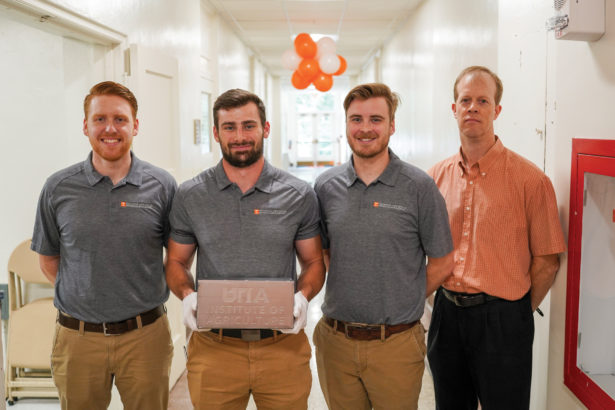
Back in Knoxville, UTIA members wanted a new time capsule to install this year in Morgan Hall’s cornerstone. They also wanted a better outcome than the 1919 capsule. They turned to the UT Knoxville Tickle College of Engineering.
Professor Tony Schmitz in the Department of Mechanical, Aerospace and Biomedical Engineering says he was thrilled by the request.
“It provided me, my students and colleagues an opportunity to leverage our research and manufacturing capabilities to collaborate with and provide value for the larger UT ecosystem,” he says.
A 10-member team formed and got to work on designing and fabricating the capsule. The result of their labor is a gleaming capsule formed of 304 stainless steel plates made using a 5-axis CNC machining center, robotic welding and water-jet cutting. The engineers threw everything they had at crafting a solid enclosure.
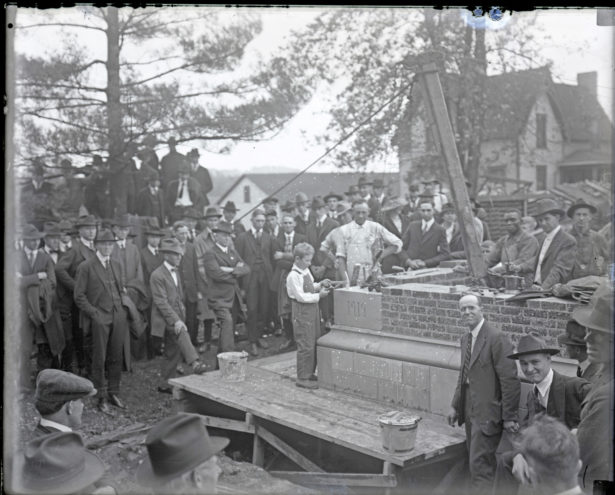
In 1919, the young son of 13th UT President Harcourt Morgan helped mortar in the building’s cornerstone, into which that year’s time capsule was placed. This summer, Harcourt Morgan’s two great-great-great-granddaughters, Jacy and Kaly Hinds, did the honors, with a crowd of UTIA employees and students circled round to cheer them on. The scene neatly recreated the image captured by a photographer’s lens 102 years ago.
A nod to the past century for a time capsule intended to be opened a century from now. What’s more romantic than that?
Sarah Joyner with UTC contributed to this article.
